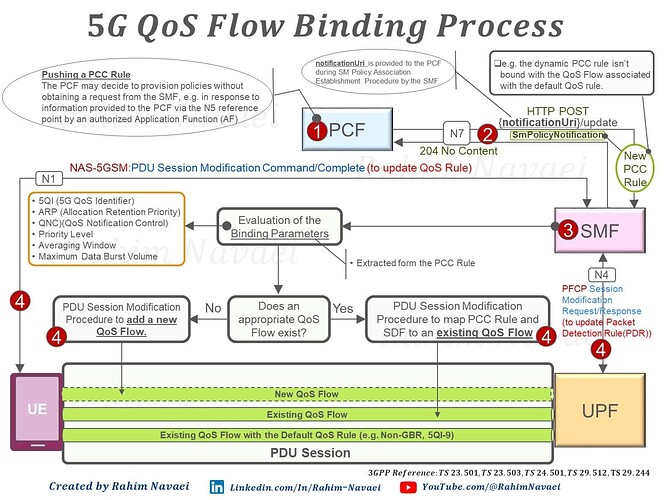-
The PCF may decide to provision Session Management policies without obtaining a request from the SMF, e.g. in response to information provided to the PCF from an authorized Application Function (AF). In this case, using the received information, the PCF creates a new PCC Rule and then provisions the SMF. There are some important parameters as binding parameters in the received PCC Rule as follows:
- 5QI (5G QoS Identifier);
- ARP (Allocation Retention Priority);
- QNC (QoS Notification Control), if available in the PCC rule;
- Priority Level (if available in the PCC rule);
- Averaging Window (if available in the PCC rule);
- Maximum Data Burst Volume (if available in the PCC rule);
-
The binding parameters are used by the SMF to bind a QoS Flow to a PCC Rule. The SMF evaluates whether a QoS Flow with QoS parameters identical to the binding parameters exists unless the PCF requests to bind the PCC rule to the QoS Flow associated with the default QoS rule:
- If no such QoS Flow exists, the SMF derives the QoS parameters, using the parameters in the PCC Rule and then proceeds to run the PDU Session Modification Procedure to create a new QoS Flow.
- If a QoS Flow with QoS parameters identical to the binding parameters exists, the SMF updates the QoS Flow, so that the new PCC Rule is bound to this QoS Flow.
-
Here I try to depict how a new received PCC Rule from the PCF can be bound with a QoS Flow by the SMF.
LinkedIn: ![]()
